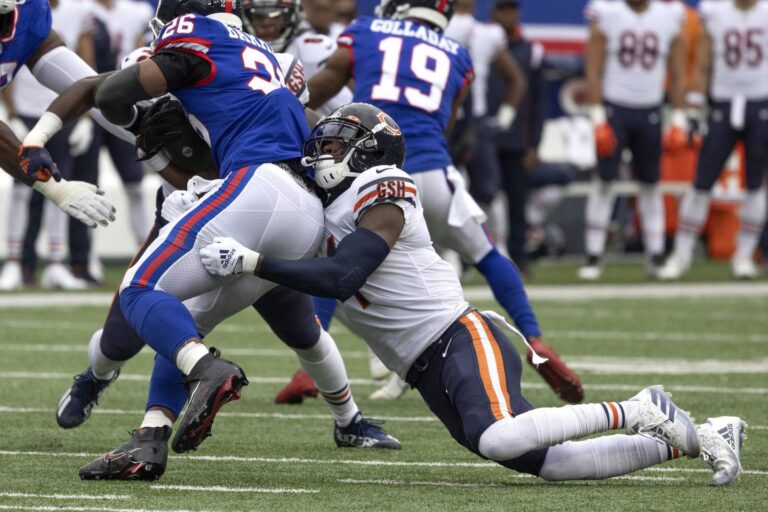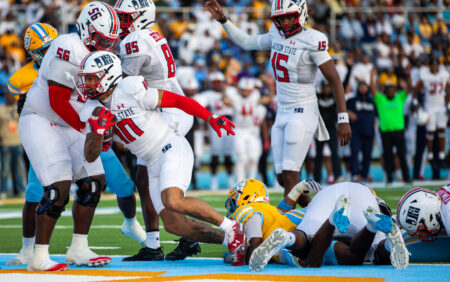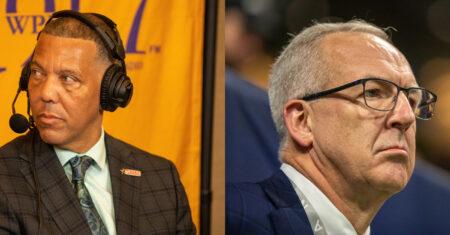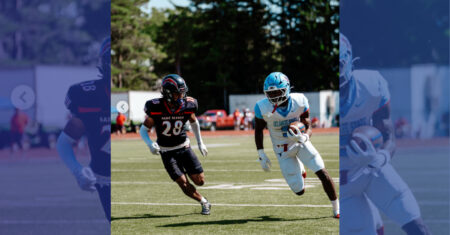Notice: Trying to get property 'post_title' of non-object in /home/ofzfvenynm4q/public_html/wp-content/plugins/wp-rss-feed-to-post/includes/wprss-ftp-display.php on line 109
The concept of complementary football should lead Matt Eberflus and Alan Williams to think more aggressively Sunday when the Chicago Bears face the Minnesota Vikings at U.S. Bank Stadium.
The Bears won’t solve their well-documented offensive woes anytime soon. They rank 30th in scoring, 30th in time of possession and 31st in first downs. They don’t match up against the firepower of the Vikings (3-1) in the turnkey offense first-year coach Kevin O’Connell inherited. Basically it’s Sean McVay’s scheme with more depth at wide receiver and a much better running game.
Advertisement
Williams, the Bears defensive coordinator, needs to find ways to make quarterback Kirk Cousins uncomfortable. A good example is the Vikings’ Week 2 game in Philadelphia. The Eagles, primarily a zone-coverage team, came after Cousins with six zero-coverage blitzes, and that quickly took the Vikings out of rhythm. The Eagles only had two sacks, but Cousins was intercepted three times in a 24-7 loss.
Cousins can get hot and stay hot with a clean pocket, and the Bears can’t afford that, especially when running back Dalvin Cook is a threat. It’s not as if the Bears can sit back in their Cover-2 shell to prevent wide receiver Justin Jefferson from taking the top off the defense and expect to have success by limiting explosive plays. Add in receivers Adam Thielen and K.J. Osborn and it’s a lot to deal with.
Advertisement
The defense needs takeaways. It needs to set up short fields for the offense and frazzle Cousins before he settles in. The Bears lack an elite pass rusher right now with opponents regularly double-teaming or chipping defensive end Robert Quinn. Williams should roll the dice and needs a little luck in picking his moments.
It’s going to require discipline too. The Bears sent free safety Eddie Jackson on a blitz Sunday against the New York Giants, and he went through the A gap, where a teammate already was. It created a huge void on the left side of the defense, and Giants running back Saquon Barkley motored through the hole for a 29-yard gain in the second quarter.
Discipline was the main talking point in defensive meetings after Barkley ran for 146 of the Giants’ 262 rushing yards. The Bears run defense is off to a miserable start, allowing a league-high 183.3 yards per game. While four games is a small sample size, the last team to finish a season with a worse run defense is the 1980 New England Patriots, who allowed 184.4 yards per game. For comparison, the Pittsburgh Steelers were last in the league in run defense in 2021. They allowed 146.1 yards per game.
A common theme to the problems stopping the run — the Green Bay Packers rolled up 203 yards in Week 2 — is players have been trying to do too much.
“We’ve got to trust each other,” defensive tackle Justin Jones said. “We have to make sure we know our guys are going to be where they’re supposed to be. That statement ‘Do your job’ gets thrown around a lot, but people don’t understand the gravity of it. Everybody has to do their part for the defense to work. The biggest thing for us is to make sure we’re on the same page. If you’re trying to do your job plus somebody else’s job, your not going to be where you’re supposed to be, and it’s a trickle-down effect.”
The Bears aren’t going to get chances to heat up Cousins if they don’t stop the run either. The Giants had little intention of throwing the ball Sunday. There were a total of six drop-back opportunities to rush the passer. The Giants didn’t have to deviate because between Barkley and quarterback runs by Daniel Jones and Tyrod Taylor, they did enough offensively.
Jefferson and Cook are the best receiver-running back combination the Bears have faced to date, and it creates conflict for Williams and his players.
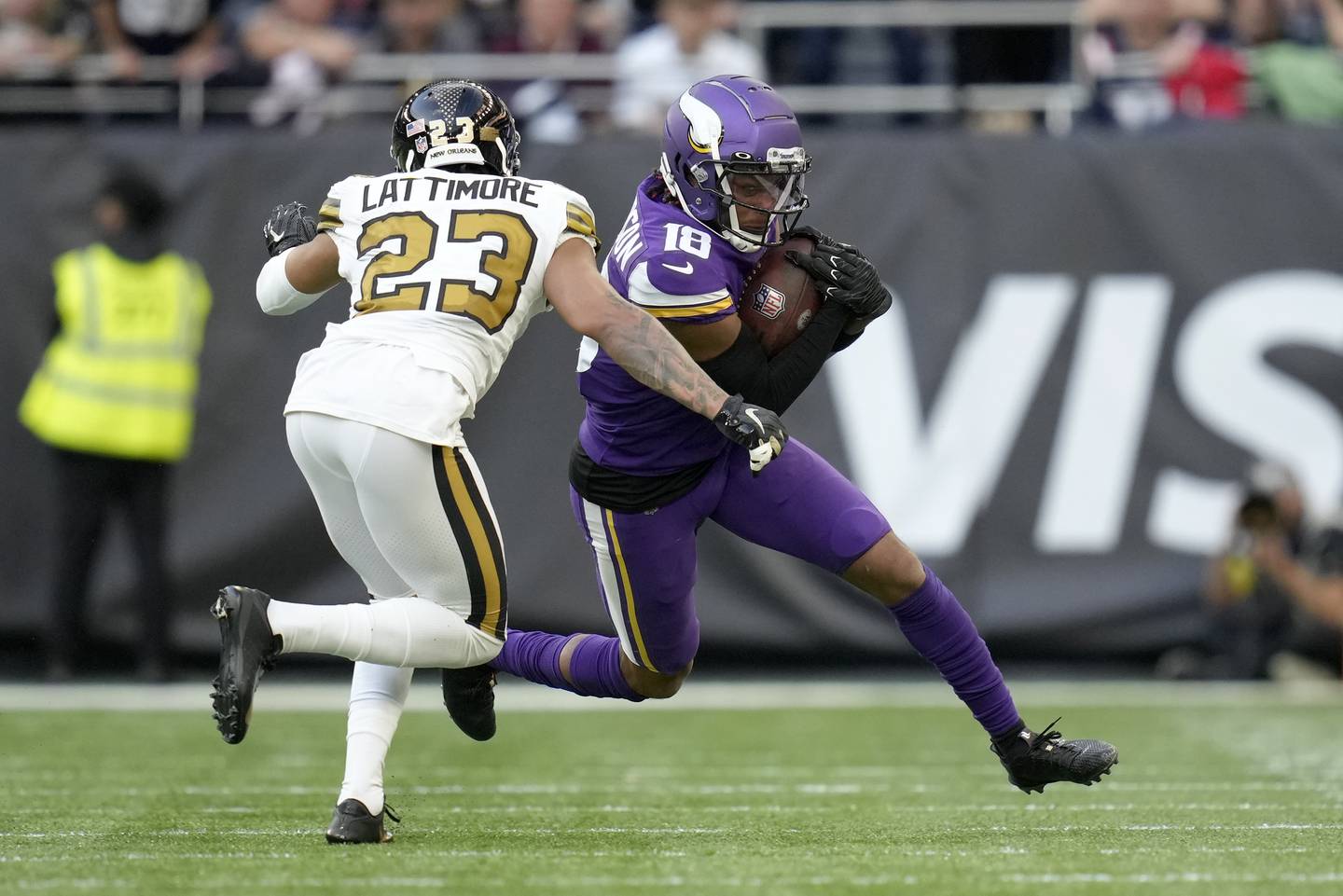
“It causes a lot of awareness,” middle linebacker Nicholas Morrow said. “We’ve got to be aware of what they’re trying to set up. Maybe it’s with formations. Maybe they run a jet (motion) to get Jefferson isolated on the back side or Thielen on the back side, or maybe they’re trying to create space to let Cook run the ball.
Advertisement
“They are really balanced. Whether it’s personnel-wise or with formations, they do a good job of having balance. You have to respect every aspect. It’s a key game. We have to make sure we don’t lose our keys and we can’t have dirty eyes. Have to make sure we have our eyes in the right spot.”
Until the Bears prove they can stop the run, they’re going to get a heavy dose of it. That is Williams’ thinking, anyway.
“I would think that they would look at us and go, ‘They’re coming in our house and we’re going to run the ball down their throat and then play-action pass and get over their head,’ ” Williams said. “That’s what the stats say to do. We’ll see if the stats lie or not.”
Early in the game Williams needs to try to dictate the action and force Cousins out of his comfort zone. Otherwise the Bears will struggle to keep pace offensively.
Christian Darrisaw, Vikings left tackle
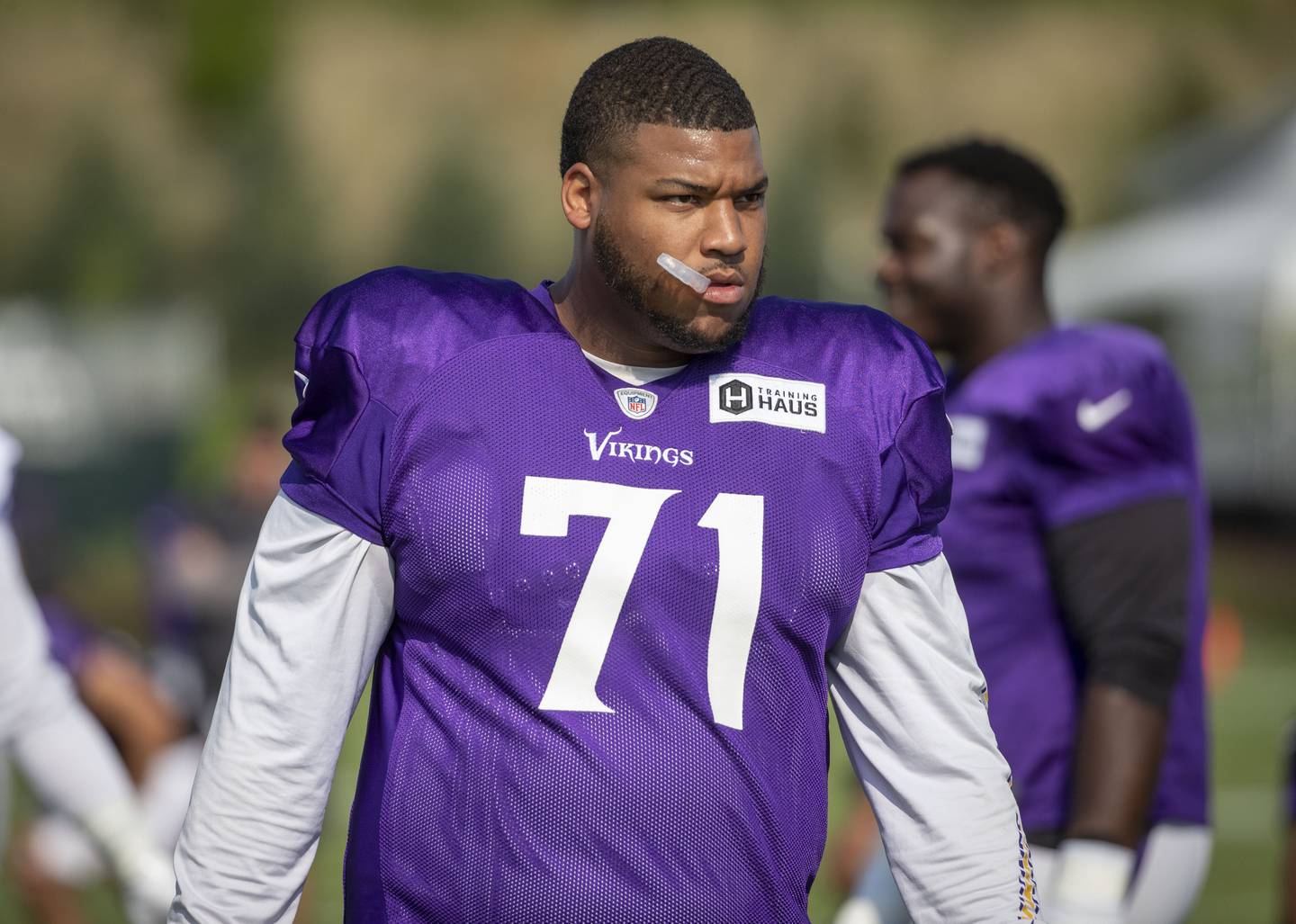
Information for this report was obtained from NFL scouts.
Advertisement
Darrisaw, 6-foot-5, 315 pounds, was drafted with the No. 23 pick out of Virginia Tech in 2021, the fourth offensive tackle selected in his class, six slots after the Las Vegas Raiders selected Alex Leatherwood, who is now with the Bears.
While Northwestern’s Rashawn Slater was by far the best lineman in the class last season playing left tackle for the Los Angeles Chargers, Darrisaw has closed ground and is playing well, aided by a strong training camp after groin surgery forced him out for the majority of the summer during his rookie year. He made 10 starts in 2021 and has started to settle in.
“He’s extremely athletic in terms of his body size, his movement ability and his ability to control his lower half,” the scout said. “That is why he was a first-round pick because he fit the profile of what you want at the tackle position. He’s got long arms (34 ½ inches), good reach and he’s got active hands. Anytime when you have a young left tackle, they’re going to get exposed at times when they start to bend a little bit at the waist and lunge instead of getting to proper depth, but those are correctable situations. Those are going to happen early in his career. What you’re seeing in his development is his technique is improved and he’s much stronger in his ability to drop anchor and take on power rushes.
“You add to that to what he already has in his natural gifts and natural movement ability, now you’re talking about a player that can be pretty high end if he stays healthy. He’s going to benefit from this offense because you have more play-action opportunities, you have more shot-play throws and they use a lot of motion and misdirection, which is going to impact the pass rush. A lot of times when you go against a Sean McVay or Kevin O’Connell offense, defensive ends are not screaming off the edge all the time because they’re grabbing the eyes with jet motion and shifts and movement and run action away, so they’re working more laterally with their first step. In third-and-7, Darrisaw has got to be a player for you, but he does have some advantages from the offensive scheme as well.”




